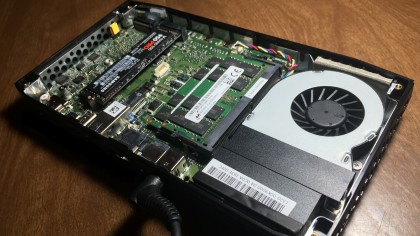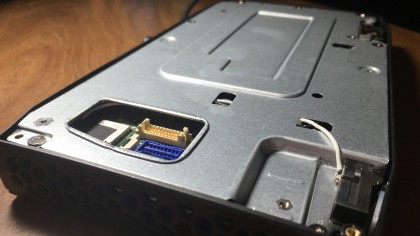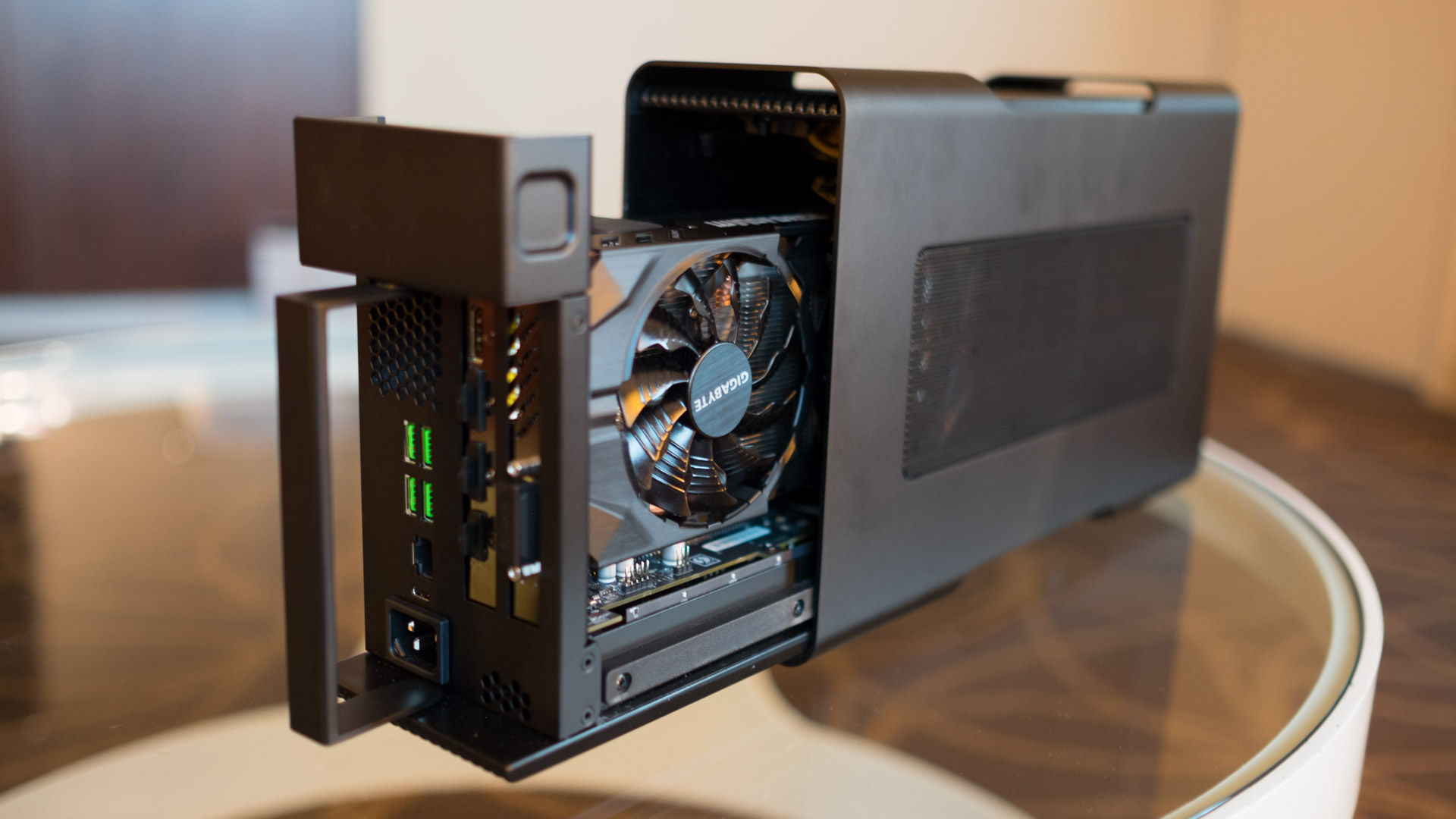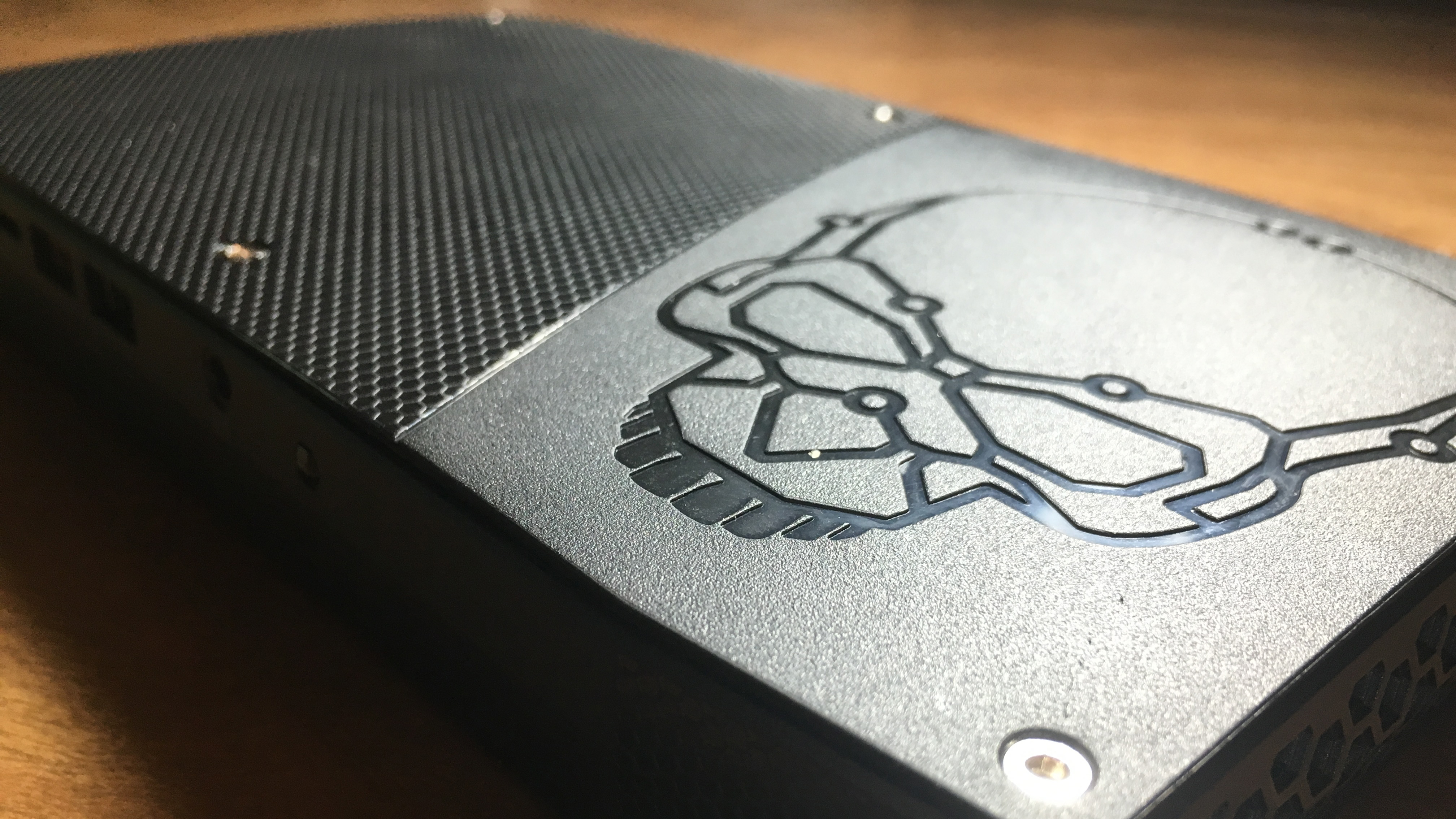Why you can trust TechRadar
Through and through, the Skull Canyon NUC is positioned as a gaming product, and Intel's design doesn't let you see past that easily.
Featuring a bold outline of an anatomically correct cranium etched into its surface, the Skull Canyon NUC looks just as fit for a 14-year-old boy as any other gaming-centric hardware. That said, the chipmaker was generous enough to make the face plates interchangeable, including a second face plate free from the unruly, teenager-pandering design.

Like most PCs geared towards gaming, the Skull Canyon NUC can't afford to be fanless. Making use of Intel's higher-end Iris Pro graphics, it isn't hard to see why. Intel's onboard cooling solution runs loudly, louder than some liquid-cooled desktop towers. And, seeing as the Skull Canyon is more likely to actually sit atop your desk, the proximity gives its fans more authority over your eardrums.
Luckily, you can easily equip a pair of wired headphones with the Skull Canyon's onboard 3.5mm jack, conveniently placed on the front of the system. Accessible ports like this one, make a good case for Skull Canyon to become your go-to computer for everyday tasks.
Having two USB 3.0 ports and an SD card slot an arm's distance away feels like a luxury compared to crawling under your desk in search of an open connection.

Cleverly, the ports you'll need to get to less frequently, e.g. HDMI, DisplayPort, Thunderbolt 3, mini toslink for optical audio, Ethernet, power and a pair of extra USB-A connections, are located on the rear of the device. That's also where the fan ventilation is, keeping the less eye pleasing aspects of the Skull Canyon a lot more covert.
Crack open the device from the bottom, and you'll be greeted with an adorable little motherboard filled with equally shrunken connectors and headers where you'll place your parts. It appears as though there's room for up to two SSDs as well as two slots for DDR4 RAM, up to 32GB in total. This leaves plenty of room for expansion down the line.
Sign up for breaking news, reviews, opinion, top tech deals, and more.
Here's the Intel Skull Canyon NUC configuration sent to techradar for review:
Spec sheet
- CPU: 2.6GHz Intel Core i7-6770HQ (quad-core, 6MB cache, up to 3.5GHz)
- Graphics: Intel Iris Pro Graphics 580
- RAM: 16GB DDR4 (2,133MHz)
- Storage: 512GB SSD (PCIe 3.0 x 4 NVMe)
- Optical Drive: None
- Ports: (Rear) 2 x USB 3.0, 1 x Thunderbolt 3 or USB Type-C, HDMI 2.0, Mini DisplayPort 1.2 (Front) 2 x USB 3.0, SD card slot, consumer infrared sensor, microphone and headphone jack
- Connectivity: Ethernet; Intel Dual-Band Wireless-AC 8260; Bluetooth 4.2
Prying open the Skull Canyon from the bottom is as easy as taking a small screwdriver to each of its four screws and unloading the shell using your fingernail or a butter knife. Taking off the top for switching up faceplates can be accomplished with probably the smallest allen wrench in your collection.

Now, how well does this thing game? Here's how the Intel Skull Canyon NUC performed in our battery of benchmark tests:
Benchmarks
- 3DMark: Cloud Gate: 12,074; Sky Diver: 7,764; Fire Strike: 1,757
- Cinebench: CPU: 708 points; Graphics: 84 fps
- Geekbench: 3,772 (single-core); 13,716 (multi-core)
- PCMark 8 (Home Test): 3,755
- The Division: (1080p, Ultra): 8 fps; (1080p, Low): 25 fps
- GTA V: (1080p, Ultra): 4 fps; (1080p, Low): 34 fps
As a productivity device solely reliant on Intel integrated graphics, the Skull Canyon NUC fared sufficiently in our tests. As a gaming machine, it was actually quite dismal. The Division, for instance, can handle an average 25 frames per second (fps) at the lowest settings while Grand Theft Auto V managed a slightly more impressive 34 fps. Bump it up to the highest settings, and you're faced with only 8 fps in The Division or a paltry 4 fps in Grand Theft Auto V.
For this reason, Intel is embracing support for the $499 (about £346, AU$687) Razer Core external graphics card enclosure, which lets users connect a standard desktop GPU to the NUC over a Thunderbolt 3 connection.

Apparently this peripheral can seamlessly upgrade your Skull Canyon from a mid-range workstation to a hardy gaming rig, thanks to its support for AMD cards up to the R9 Fury and Nvidia units up to the Titan X. As of this writing, Razer says it will be shipping out Core units to reviewers beginning in early June.
The underlying problem here is that, while the Razer Core compensates for the Skull Canyon's primary inadequacy, it adds yet another expense to an already extortionate piece of kit. Now, assuming you want Windows 10, 512GB of storage space, 16GB RAM, and, say, an R9 Fury, you're looking at a cost of about $2,169 (£1,482, AU$2,993).
That's the price you have to pay for a compact gaming PC, right? Well, not exactly. While the Skull Canyon is small enough to fit in a binder, the Razer Core is about the size of a small form factor, MiniITX computer. But hey, at least it can be maneuvered separate from the graphics card holster.

